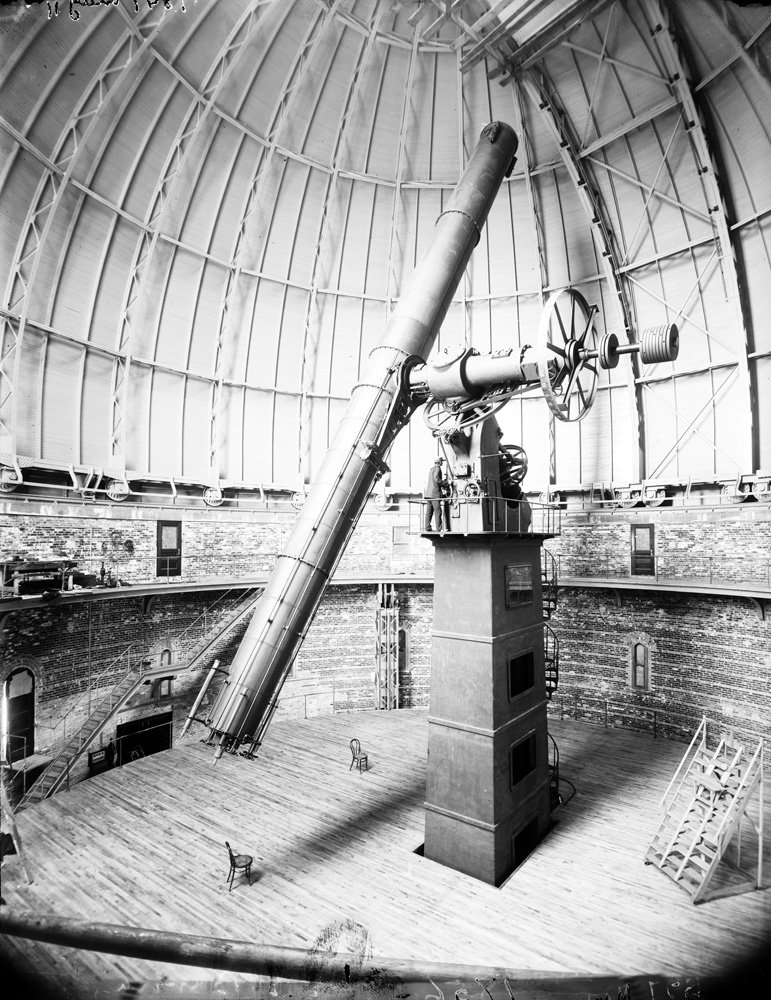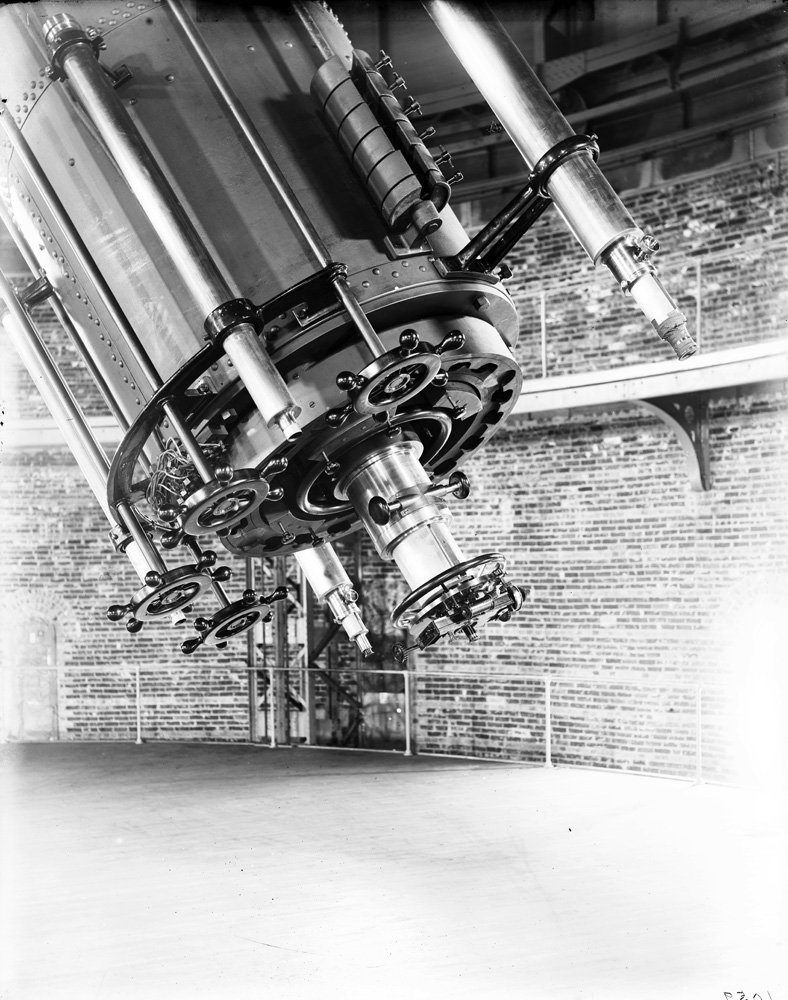Science at Yerkes
In the early 20th century, astronomers at Yerkes Observatory monitored the sun; mapped the Milky Way with photographic plates; discovered and catalogued binary stars; measured the positions, motions, and distances of stars; determined apparent stellar brightness and color; explored the nature of the bright and dark nebulae; and analyzed spectra.
These activities were driven partly by advances in thermodynamics and atomic structure, and partly by an influx of astronomical and astrophysical data, obtained thanks to a new generation of instruments. Specialized telescopes were used for both solar and nighttime observations, often aided by the attachment of a spectrograph to reveal spectra. And, while some measurements were still done visually, Yerkes staff increasingly recorded light on photographic glass plates.
The Yerkes Observatory was a largely self-contained laboratory for both research and graduate-level teaching. It housed the world’s largest lens-type (refractor) telescope as well as a number of smaller instruments, including a mirror-type (reflector) telescope that could record even fainter patches of light. It also contained machine shops for constructing custom instruments, grinding and polishing engines for fabricating lenses and mirrors, and dark rooms for developing glass plates.


